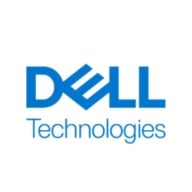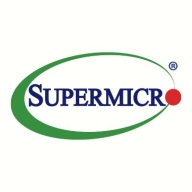

Dell PowerEdge C and Supermicro SuperBlade are competitors in the server market. Supermicro SuperBlade seems to have the edge due to its advanced features, justifying its price despite Dell PowerEdge C's strong pricing and support.
Features: Dell PowerEdge C offers robust processing capabilities, energy efficiency, and high-performance computing suitability. Supermicro SuperBlade provides unparalleled scalability, modular design, and flexibility for diverse configurations.
Room for Improvement: Dell PowerEdge C could improve in customization options, scalability for complex tasks, and diverse configuration accommodation. Supermicro SuperBlade might enhance its user interface simplicity, initial deployment process, and pricing strategy for budget-friendliness.
Ease of Deployment and Customer Service: Supermicro SuperBlade ensures comprehensive customer support with a streamlined deployment process, while Dell PowerEdge C offers a user-friendly deployment experience and accessible technical support, ideal for businesses needing quicker setup times.
Pricing and ROI: Dell PowerEdge C provides an attractive setup cost with a favorable ROI for core computing needs without extensive scalability. Supermicro SuperBlade, despite a higher initial cost, offers greater ROI when its full scalability and advanced functions are utilized.
| Product | Market Share (%) |
|---|---|
| PowerEdge C | 1.0% |
| Supermicro SuperBlade | 7.1% |
| Other | 91.9% |


| Company Size | Count |
|---|---|
| Small Business | 15 |
| Midsize Enterprise | 4 |
| Large Enterprise | 10 |
Dell PowerEdge C is recognized for its ease of use, reliability, scalability, high performance, and flexible customization, making it a cost-effective server solution. It is ideal for hosting virtual machines and managing business, application, and data center services.
PowerEdge C supports stable hybrid environments with its enhanced remote management and virtualization capabilities. It is compatible with Intel processors and provides a tool-less design with an intuitive management interface for seamless operation. Users in telecom and banking rely on its ability to run corporate applications like VOIP and Python, while benefiting from efficient power consumption and compactness. However, there are concerns about update automation, bug issues, integration with AI platforms, and limited expansion capabilities, prompting suggestions for better memory, processing, and improved support, especially around the iDRAC management interface.
What are the key features of Dell PowerEdge C?Telecom and banking industries leverage Dell PowerEdge C to manage corporate applications and virtual environments, supporting private cloud setups and VMware deployments for both internal and client infrastructures. Its adaptability to client budgets allows configurations that range from basic to high-performance computing tasks.
Supermicro SuperBlade delivers innovative computing performance and efficiency, perfect for data-intensive tasks. With its modular design, it optimizes space and power, providing a flexible and scalable infrastructure for demanding business workloads.
Supermicro SuperBlade is specifically engineered for modern data centers needing high-density computing. It offers a compact, modular architecture that simplifies system management and enhances agility. It integrates seamlessly with cloud and virtualization technologies, supporting diverse applications and workloads. Its design focuses on reducing operational costs while achieving peak performance. Users appreciate its balance of power efficiency and high computing capacity.
What are the key features of Supermicro SuperBlade?Supermicro SuperBlade is widely implemented in sectors such as finance, healthcare, and research where high computational power and storage are critical. In finance, it's used for real-time analytics and transactions. Healthcare facilities use it for patient data analysis and complex simulations, while research institutions leverage SuperBlade for simulations and data-intensive research tasks. Its adaptability allows enterprises to efficiently meet technical requirements unique to each industry.
We monitor all Blade Servers reviews to prevent fraudulent reviews and keep review quality high. We do not post reviews by company employees or direct competitors. We validate each review for authenticity via cross-reference with LinkedIn, and personal follow-up with the reviewer when necessary.